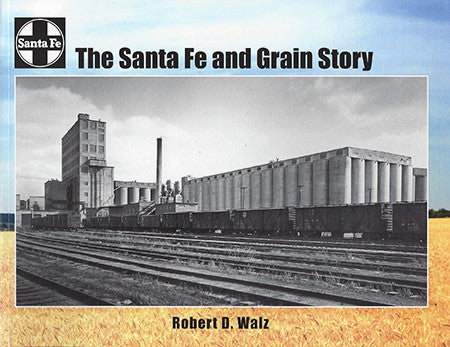THE SANTA FE AND GRAIN STORY/Walz
IN STOCK AND SHIPPING!
The Santa Fe and Grain Story tells the history of the Santa Fe’s role in the transportation of grains and grain products over the last century. Wheat was the most important grain to the railroad, which had extensive lines throughout the midwest, including the major wheat- producing states of Kansas, Oklahoma, and Texas. Eastern Kansas, Missouri and Illinois added corn-growing territory to the story, and eastern Texas featured rice. Other important grains were barley, oats and grain sorghums, all of which are discussed to some extent.
The farm economy for the entire life of the Santa Fe followed a boom-and-bust cycle. There were prosperous years when the railroad carried large amounts of grain where grain traffic was light. This made it difficult for the Santa Fe to plan for efficient use of cars and to project revenues. This made it difficult for the Santa Fe to plan for efficient use of cars and to project revenues.
The Santa Fe entered the trade by carrying grain in 25-ton capacity boxcars travelling relatively short distances. Over the next 125 years, grain cars increased in type and capacity – first to 50-ton boxcars, then to covered hopper cars (initially with 70-ton capacity), to today’s cars with a capacity of over 140 tons. As the type and capacity of cars was changing, there were also more grain cars per train travelling longer average distances so that by the end of the period, grain was moving long distances in solid unit trains.
This book is the first in a series to be produced by the Santa Fe Railway Historical and Modeling Society discussing the Santa Fe’s involvement with important commodities shipped on its lines.
List price $52.50, 212 pages, 11x8½ perfect bound, 216 black & white and 81 color photos, appendix. SKU: SFGRAIN. Posted June 28, 2016.

